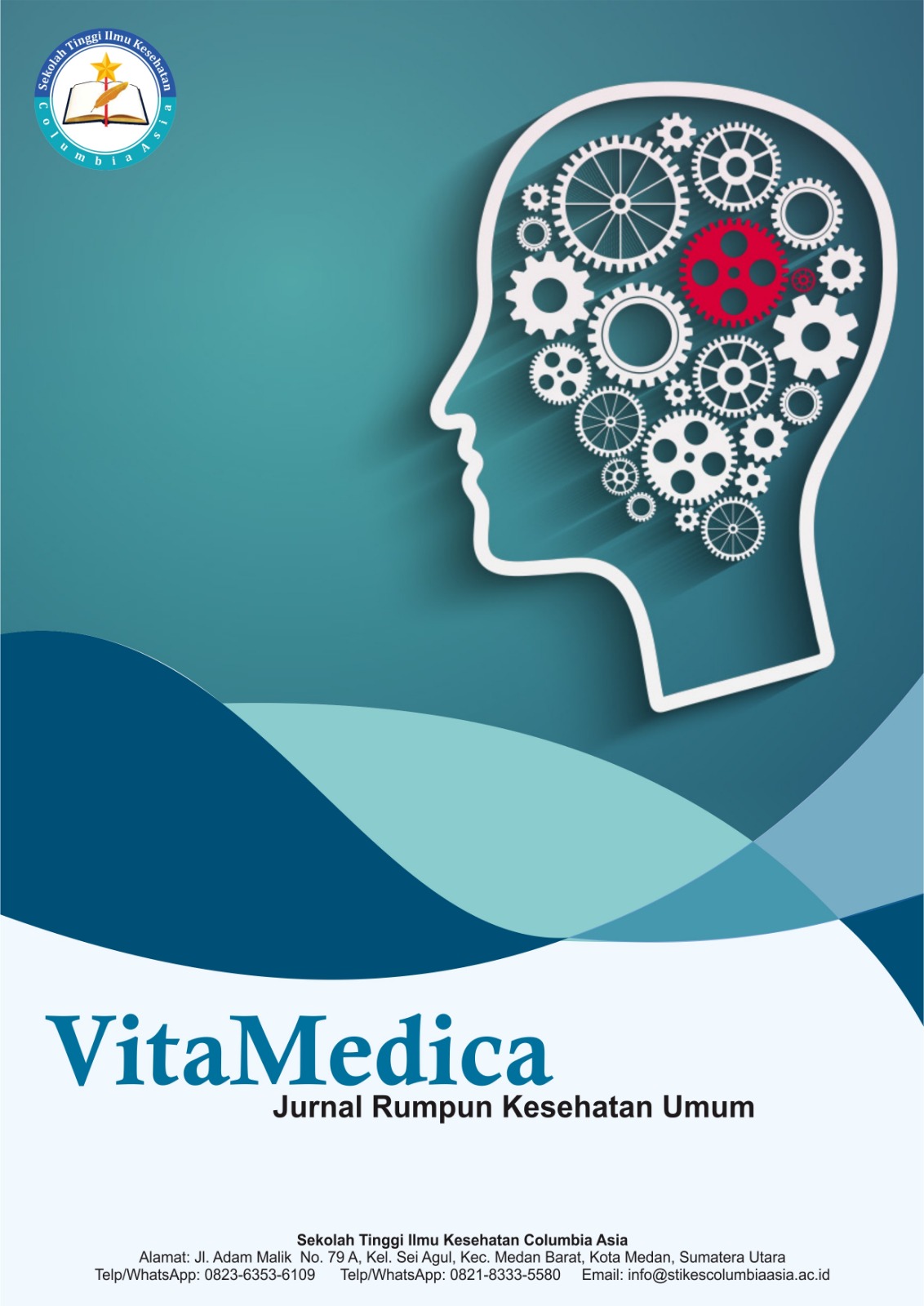Studi Literatur Uji Stabilitas Fisik Berbagai Sediaan Berbasis Ekstrak Daun Kencur (Kaempferia galanga L.)
DOI:
https://doi.org/10.62027/vitamedica.v3i3.410Keywords:
Aromatic ginger, Cream, Gel, Ointment, Physical stabilityAbstract
Galangal (Kaempferia galanga L.) is a herbal plant known to have anti-inflammatory, antibacterial, and antioxidant activities. The use of galangal extract in topical pharmaceutical preparations such as ointments, gels, and creams requires attention to the physical stability of the preparation to ensure the effectiveness and safety of the product. This study aims to examine the physical stability of various forms of galangal extract-based preparations through literature studies from three relevant journals. The method used is a descriptive literature study by analyzing the results of physical stability tests (organoleptic, pH, homogeneity, spreadability, adhesion, and viscosity) of ointments, gels, and creams. The results of the study showed that the gel form with a carbopol base provided the best overall physical stability, followed by an ointment with a water-washed base. Meanwhile, sunscreen cream made from galangal and seaweed showed quite good stability, although its spreadability and adhesion still need to be improved. This study provides an overview that the form and composition of the preparation greatly affect the physical stability of galangal extract, as well as the importance of choosing the right base in the formulation.
References
Allen, L. V., Popovich, N. G., & Ansel, H. C. (2011). Ansel’s pharmaceutical dosage forms and drug delivery systems (9th ed.). Lippincott Williams & Wilkins.
Aulton, M. E., & Taylor, K. (2017). Aulton's pharmaceutics: The design and manufacture of medicines (5th ed.). Elsevier.
Banker, G. S., & Rhodes, C. T. (2002). Modern pharmaceutics (4th ed.). Marcel Dekker Inc.
Florence, A. T., & Attwood, D. (2011). Physicochemical principles of pharmacy (5th ed.). Pharmaceutical Press.
Harjanti, D., & Pratama, R. (2023). Pengaruh variasi basis terhadap sifat fisik gel ekstrak daun kemangi (Ocimum sanctum L.). Pharmacon: Jurnal Ilmiah Farmasi, 14(1), 45–52.
Imanudin, F. R., Purgiyanti, & Susanto, J. (2024). Uji stabilitas krim tabir surya ekstrak kencur (Kaempferia galanga) dan rumput laut (Eucheuma cottonii). Parapemikir: Jurnal Ilmiah Farmasi, 13(1), 118–123.
Kharisma, D. H., & Widyaningrum, L. D. (2020). Formulasi dan uji stabilitas sediaan gel ekstrak daun binahong (Anredera cordifolia) sebagai obat luka bakar. Jurnal Farmasi Indonesia, 17(2), 145–153.
Martin, A. N., Swarbrick, J., & Cammarata, A. (1993). Physical pharmacy: Physical chemical principles in the pharmaceutical sciences (4th ed.). Lea & Febiger.
Nawangsari, D., & Sunarti. (2021). Uji stabilitas sediaan salep ekstrak etanol rimpang kencur (Kaempferia galanga L.) dalam berbagai basis. Journal of Pharmacopolium, 4(2), 67–74. http://ejurnal.stikes-bth.ac.id/index.php/P3M_JoP
Rowe, R. C., Sheskey, P. J., & Quinn, M. E. (2009). Handbook of pharmaceutical excipients (6th ed.). Pharmaceutical Press.
Samodra, G., & Kusuma, I. Y. (2021, Oktober). Uji stabilitas fisik kombinasi ekstrak etanol rimpang kencur (Kaempferia galanga L.) dan daun tapak dara (Catharanthus roseus) dalam sediaan gel sebagai antiinflamasi. Prosiding Seminar Nasional Penelitian dan Pengabdian kepada Masyarakat (SNPPKM), 912–918.
Septiani, D. S., & Nurjannah, S. (2021). Formulasi dan uji stabilitas sediaan krim ekstrak daun sirih (Piper betle L.). Jurnal Ilmu Kefarmasian Indonesia, 19(1), 12–18.
Sulastri, Y., & Rahmawati, R. (2022). Kajian literatur stabilitas fisik sediaan topikal berbasis bahan alam. Jurnal Farmasi Tradisional, 7(2), 101–109.
Voigt, R. (1994). Buku pelajaran teknologi farmasi. Gadjah Mada University Press.
Wicaksono, Y., & Astuti, R. I. (2019). Stabilitas fisik sediaan salep ekstrak rimpang temulawak (Curcuma xanthorrhiza Roxb.). Jurnal Sains dan Teknologi Farmasi, 24(3), 223–229.
Downloads
Published
How to Cite
Issue
Section
License
Copyright (c) 2025 VitaMedica : Jurnal Rumpun Kesehatan Umum

This work is licensed under a Creative Commons Attribution-ShareAlike 4.0 International License.







